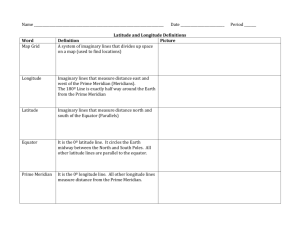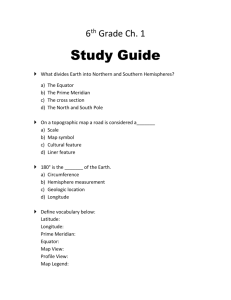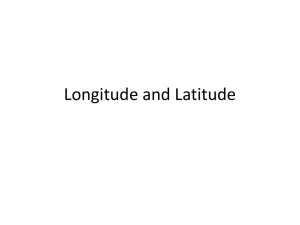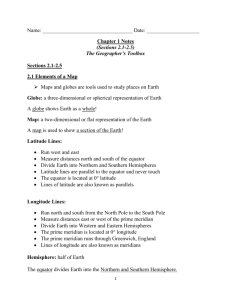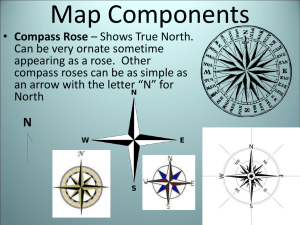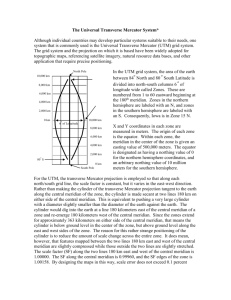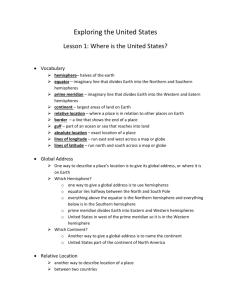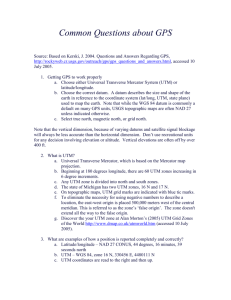Chapter 2 - WHFreeman
advertisement
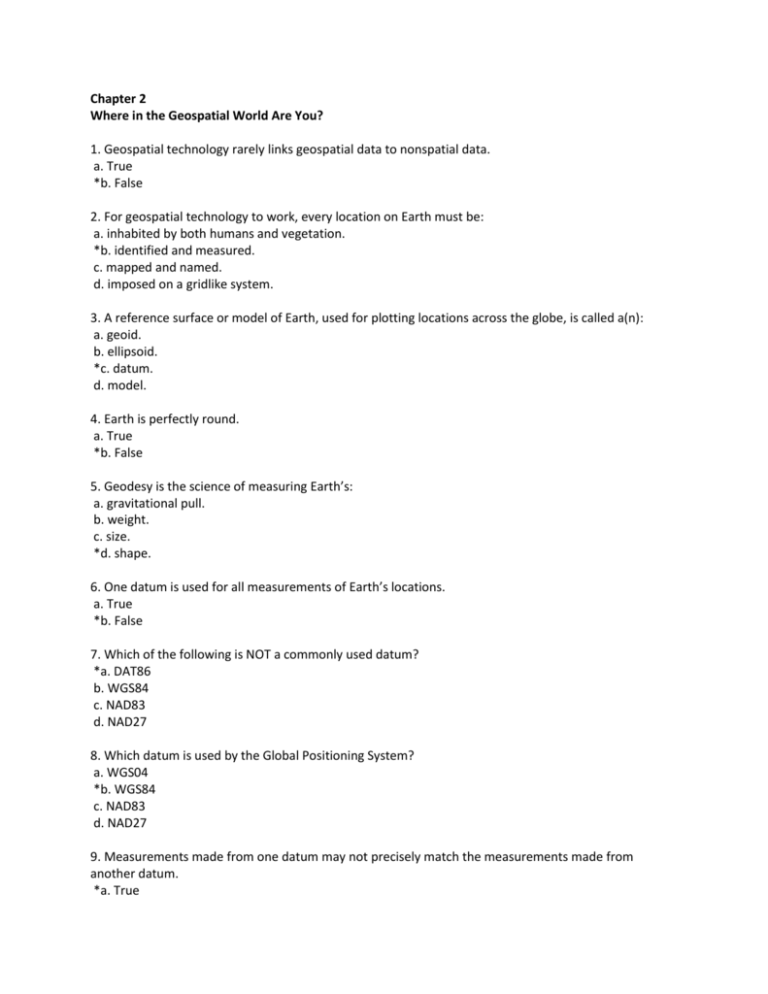
Chapter 2 Where in the Geospatial World Are You? 1. Geospatial technology rarely links geospatial data to nonspatial data. a. True *b. False 2. For geospatial technology to work, every location on Earth must be: a. inhabited by both humans and vegetation. *b. identified and measured. c. mapped and named. d. imposed on a gridlike system. 3. A reference surface or model of Earth, used for plotting locations across the globe, is called a(n): a. geoid. b. ellipsoid. *c. datum. d. model. 4. Earth is perfectly round. a. True *b. False 5. Geodesy is the science of measuring Earth’s: a. gravitational pull. b. weight. c. size. *d. shape. 6. One datum is used for all measurements of Earth’s locations. a. True *b. False 7. Which of the following is NOT a commonly used datum? *a. DAT86 b. WGS84 c. NAD83 d. NAD27 8. Which datum is used by the Global Positioning System? a. WGS04 *b. WGS84 c. NAD83 d. NAD27 9. Measurements made from one datum may not precisely match the measurements made from another datum. *a. True b. False 10. Lines of latitude run in an east-to-west direction around the globe. *a. True b. False 11. The key reference point for lines of latitude is the: a. International Date Line. b. Greenwich Mean. c. Prime Meridian. *d. Equator. 12. Lines of longitude are also known as parallels. a. True *b. False 13. The key reference point for lines of longitude is the: a. International Date Line. b. Tropic of Cancer. *c. Prime Meridian. d. Equator. 14. The Equator and the Prime Meridian both have a value of _____________ in geographic coordinate systems. *a. zero b. 30 c. 90 d. 180 15. Lines of longitude are closer together at the poles and farthest apart at the Equator. *a. True b. False 16. In general, GCS measurements are made in: a. feet. b. miles. *c. DMS. d. meters. 17. A degree is composed of ____ minutes, and a minute is composed of ____ seconds. a. 10; 30 b. 40; 90 *c. 60; 60 d. 90; 180 18. Negative values can be used when making measurements ______ of the Equator and/or ____ of the Prime Meridian. *a. south; west b. east; north c. north; south d. west; north 19. When making measurements on a sphere, the distance between two points is referred to as the: a. prime distance. b. equatorial distance. *c. great circle distance. d. circumference. 20. Every time zone is (in theory) ____ degrees wide. a. 5 b. 10 *c. 15 d. 20 21. If it is 1:00 pm in Greenwich, England, what time is it in Madagascar (3 time zones to the East)? a. 10:00 am b. 11:00 am *c. 4:00 pm d. 3:00 pm 22. Time zones strictly follow lines of longitude, regardless of the country’s size or location. a. True *b. False 23. The only representation of the world that could accurately capture all its features is a globe. *a. True b. False 24. All flat maps of the world have some distortion built into them. *a. True b. False 25. In a Mercator projection, _________ remain intact but _______ can be grossly distorted. a. positions; lines of latitude *b. shapes; sizes c. measurements; the Equator d. time zones; shapes 26. A map's distortion is minimized at: *a. the point of tangency. b. the Equator. c. the Prime Meridian. d. the International Date Line. 27. Which of the following is NOT one of the three main “developable surfaces” used in creating world maps? a. azimuthal b. conical c. cylindrical *d. rhomboid 28. Which type of projection is commonly used to create maps of the United States and other east-west trending areas? a. Transverse Mercator b. UTM c. Azimuthal *d. Lambert Conformal Conic 29. A Transverse Mercator projection is more likely to be used for north-south trending areas than for east-west trending areas. *a. True b. False 30. The UTM is used for mapping Earth’s polar zones. a. True *b. False 31. The Universal Transverse Mercator grid system divides the world into ____ zones. a. 12 b. 24 c. 50 *d. 60 32. The unit of measurement used by the UTM system is: *a. meters. b. feet. c. degrees, minutes, and seconds. d. miles. 33. The false northing value of ________ is used in UTM to avoid negative values in the Southern Hemisphere. a. 10 miles. b. 1,000 nautical miles. c. 10,000 meters. *d. 10,000,000 meters. 34. In the UTM system, each UTM zone has its own central meridian. *a. True b. False 35. The maximum size of a zone in the UTM system is 10 million meters. a. True *b. False 36. SPCS is a coordinate system used for the data of which region? a. Europe *b. the United States c. China d. the Russian Federation 37. SPCS zones are formed by following state or county boundaries. *a. True b. False 38. SPCS uses DMS for its measurements. a. True *b. False 39. Which U.S. state is composed of more than one SPCS zone? a. New Jersey b. Montana *c. Texas d. Delaware 40. A false easting is a measurement made east or west of an imaginary meridian set up for a particular zone in the UTM system. *a. True b. False


